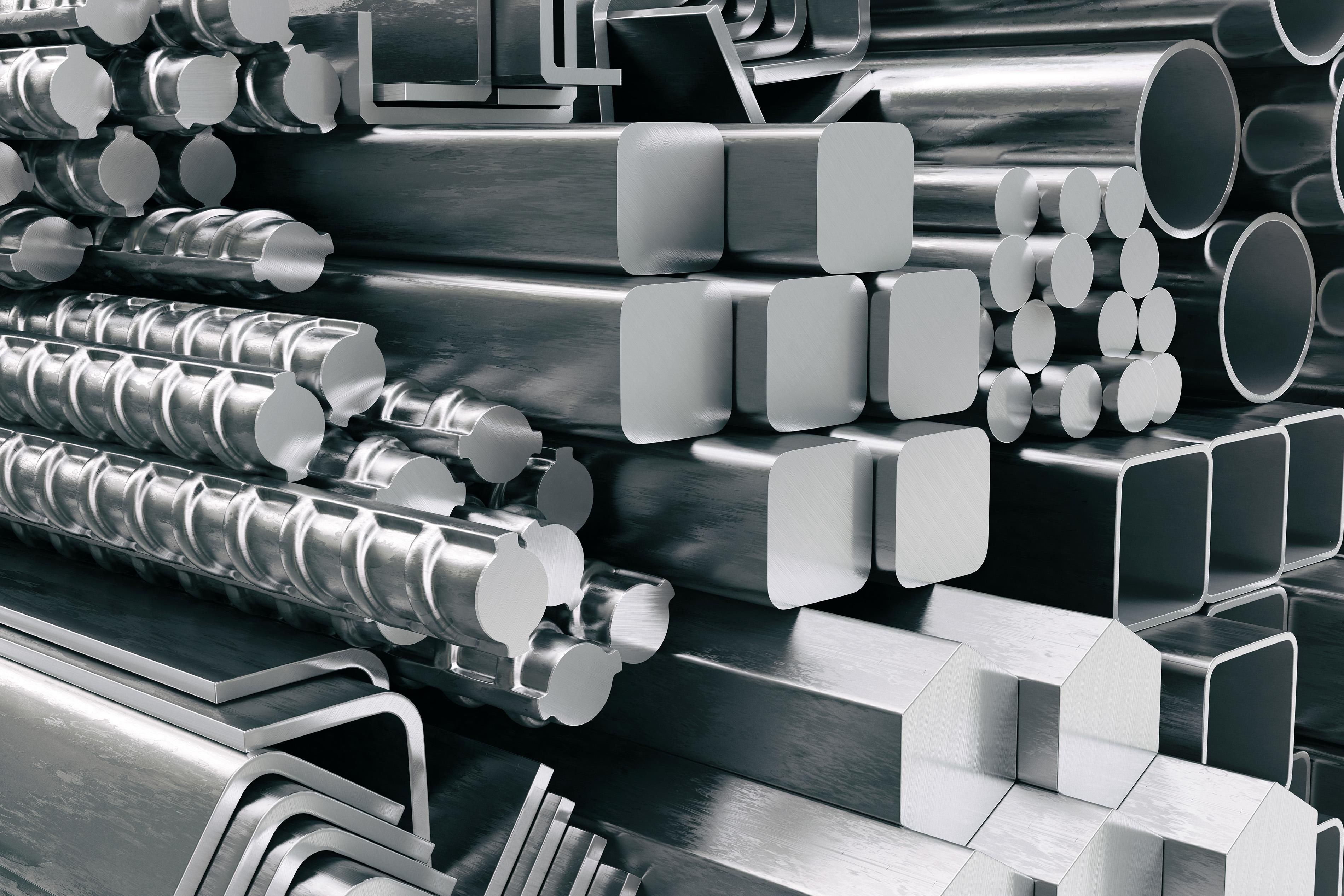Iron Price Forecast: Top Trends That Will Affect Iron in 2024

The iron ore market was racked with volatility once again in 2023, as prices rallied, dropped steeply, and rallied again to an 18 month high.
Given its strength and malleability, iron ore is one of the world’s most important industrial metals. While it has many applications, its primary use is in the production of steel.
As the new year approaches, the Investing News Network (INN) spoke to experts about the main trends in the iron market in 2023 and what the iron ore forecast is for 2024. Read on to learn what they had to say.
How did iron ore perform in 2023?
Iron ore prices hit US$128 per metric ton in March, but then fell as low as US$105 in May as concerns of a global economic recession dampened the outlook for steel production. China’s property sector woes were especially troubling for the steel market, and hence iron ore.
“China’s slowdown in 2023 has surprised the commodity market to the downside,” David Cachot, Research Director in Wood Mackenzie’s Metals & Mining team, told INN. “In the domestic market, the property recession, rising local government debt, and poor consumer and investor confidence threaten China’s economic growth.”
Being the world’s largest producer and exporter of stainless steel, China is naturally the world’s largest consumer of iron ore. While the Asian nation may also be the third largest iron-producing country, its domestic supply is not enough to meet demand. Hence, the country imports over 70 percent of global seaborne iron ore.
“Markets were disappointed by the weakness of the economy and by the lack of stimuli measures. However, strong steel exports offset a weak domestic demand and supported iron ore demand,” the Project Blue analyst team informed INN via email. “In 2023, steel exports have been increasing by approximately 35 percent, mainly due to a weak Yuan. It offset the weak domestic demand, pushing up steel production and iron ore demand.”
Wood Mackenzie reported to INN that Chinese steel exports totaled 78 million metric tons from January to October of 2023, up 36.8 percent year-over-year.
Mid-year, China’s National Development and Reform Commission announced consumption stimulus measures, aimed at auto, property and consumer electronic goods. This was followed up in October by news that the Chinese government is considering issuing a 1 trillion Yuan (US$135 billion) sovereign debt plan to bolster its economy.
By mid-December, iron ore prices were back up to US$138 per metric ton for the first time in a year and a half.
“Iron ore prices have been rallying since August. Fresh Chinese fiscal stimulus to shore up China’s economic recovery significantly impacted iron ore prices,” Cachot said. “Iron ore prices are once again defying expectations and are notably diverging from recent years’ seasonality.”
Another factor contributing to strong steel production in the face of a weak economy in 2023, according to Project Blue, was the Chinese government taking “a laxer stance” on environmental restrictions impacting steel production.
Wood Mackenzie’s Cachot agrees. “In addition, the lack of restrictions on steel output — as economic growth is prioritized and as Beijing appears willing to guarantee support to the largest troubled developers — has further fueled the recent sentiment-driven surge in iron ore,” he explained.
What factors will move the iron ore market in 2023?
As we move into 2024, what trends and catalysts can investors expect to influence supply and demand factors in the iron ore market?
“Iron ore demand will be, as always, driven by China steel production, and implicitly by China’s macro environment as well as by the property sector,” Project Blue’s analysts said. In addition, the firm says Chinese steel exports, port stocks and environmental regulations will continue to be important factors to watch in 2024.
Cachot says Wood Mackenzie expects to see near-term steel demand in China remaining weak. “However, the destocking of iron ore at Chinese ports over the last six months is providing some fundamental support to prices,” he added. Iron ore restocking at Chinese steel mills is likely ahead of the Chinese New Year.
A spike in iron ore prices is possible in Q1 if the Chinese steel export levels experienced by the market in 2023 continue into the new year and if port stocks remain at low levels and are pushed below 100 million metric tons, Project Blue said.
Outside of China, iron ore supply is typically weaker in the first quarter of the year due to historically low seaborne shipments during the cyclone season in Australia and the rainy season in Brazil — the top two iron ore-producing countries. Both Project Blue and Wood Mackenzie see this as another supportive factor for iron ore prices in early 2024.
Another important factor for the iron ore market in 2024 is of course China’s fiscal stimulus measures. “Additional fiscal measures aiming at stimulating domestic consumption and the property market would be positive for the construction sector, steel production and iron ore demand,” Project Blue noted.
While it’s difficult to forecast how much of an influence this may have on steel production and iron ore demand, market watchers may see signs emerging, particularly in Q1 when China’s construction season kicks off.
Cachot is less bullish on demand from recovery in China’s property market, which he sees as the most critical downside risk for iron ore prices in 2024. “The market continues to bet on China’s policy support to boost downstream steel demand. However, subdued property investment and land sales suggest a further decline of new starts in 2024 and years ahead, weighing on our steel demand forecast,” he explained. “Having said that, a positive growth momentum in infrastructure and manufacturing will partially offset the demand loss, as will a vigorous automaking sector.”
Cachot expects iron ore demand outside of China will improve in 2024, especially with healthy demand from India and recovery of the steel sector, although subdued, underway in Europe.
On the supply side, the outlook for 2024 seems more predictable than demand. “Iron ore supply has been only increasing slowly. With Rio’s (ASX:RIO,LSE:RIO,NYSE:RIO) Gudai-Darri and FMG’s (ASX:FMG,OTCQX:FSUMF) Iron Bridge mines ramping up, supply could increase at a higher pace in 2024,” the team at Project Blue said. “BHP’s (ASX:BHP,NYSE:BHP,LSE:BHP) South Flank should also reach full capacity next year, but its production increase will be offset by Yandi’s phasing down. Vale’s production remains the wild card, as the group has been impacted by various operational issues in 2023.”
The firm is also keeping an eye on logistical challenges in rail transport and at major ports in South Africa, which is the sixth largest iron ore-producing country, and emission reduction mandates impacting the steel sector in India, the fourth largest iron ore-producing country.
A supply side factor that may weigh on iron ore prices is the potential for market control by the China Mineral Resources Group (CMRG), a procurement agency established in 2022 to negotiate raw material purchases with global mining companies. “The purpose is to mitigate the market movements impact on prices,” Project Blue stated. “Any sharp price increase could trigger some reaction from CMRG with possible directives in terms of stocks or supply.”
Cachot says Wood Mackenzie views mine supply as short-term risk in its iron ore forecast, but with upside coming from labor, logistics and weather disruptions. More stringent ESG operating standards are also a supply-side factor. “We expect supply and trade constraints to remain a feature of markets in 2024. Mine replacement to sustain record iron ore production levels becoming more challenging in the ESG environment miners now operate in,” he said.
One important iron ore project to watch, says Cachot, is Rio Tinto and the Simfer joint venture’s massive high-grade Simandou iron ore project in Guinea, which has suffered a number of setbacks in recent years including legal battles and high costs in the midst of a low iron price environment. Recently, Rio Tinto moved up its first production date at Simandou to 2025, which could later weigh on iron ore prices.
Wood Mackenzie’s iron ore price forecast on a 62 percent Fe fines basis, CFR China, is pegged at US$110 per metric ton for 2024 and US$100 per metric ton for 2025.
Don’t forget to follow us @INN_Resource for real-time news updates!
Securities Disclosure: I, Melissa Pistilli, hold no direct investment interest in any company mentioned in this article.
Editorial Disclosure: The Investing News Network does not guarantee the accuracy or thoroughness of the information reported in the interviews it conducts. The opinions expressed in these interviews do not reflect the opinions of the Investing News Network and do not constitute investment advice. All readers are encouraged to perform their own due diligence.
From Your Site Articles
Related Articles Around the Web

Comments are closed.